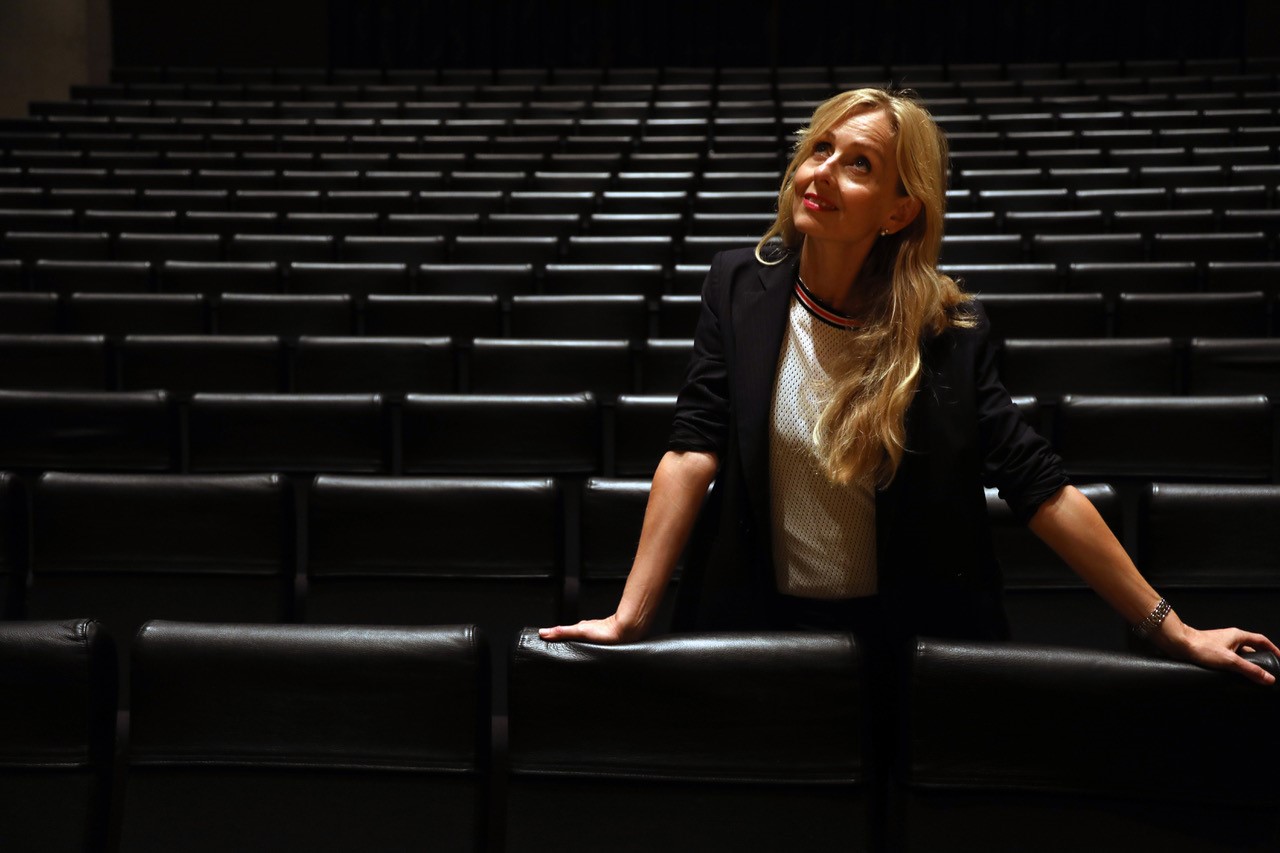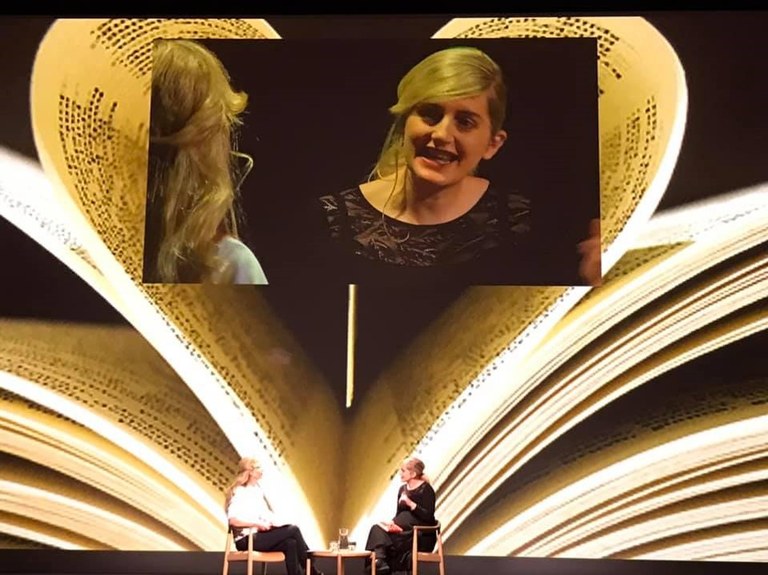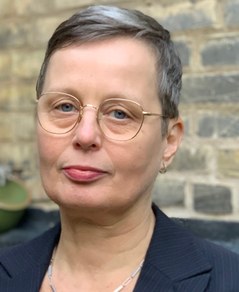Understanding each other – digital services ease cultural exchange
A common digital platform for topical conversations with Nordic profiles could raise awareness about what is going on in our neighbouring countries – just like television once did. New technology makes it easier to cross national borders.
“We know far too little about each other. Although Nordic societies are privileged, built on welfare and high levels of trust where everyone contributes, we often know little about what conversations our neighbouring countries are having," says Lise Bach Hansen in Copenhagen.
She heads a new “sounding board” with a discussion group and network which she initiated together with the Öresund Institute in Malmö and others. The aim is to improve contact between the Nordic countries’ culture sectors.
She is also Head of Talks & Literature at The Black Diamond – the modern extension of the Royal Danish Library facing the city’s harbour.
Bridging borders digitally
There is a Swedish proverb that roughly translates into “Every cloud has a silver lining”. It fits well with the potential of digital communication, which was highlighted by the pandemic when physical meetings and gatherings became limited or impossible. That was also true for the international writers’ stage at The Black Diamond.
“The restrictions opened our eyes. Today we can run a production in front of a large audience here at The Black Diamond while transmitting it live to libraries and upper secondary schools in Denmark. We reach people across the country without them needing to be in Copenhagen,” says Lise Bach Hansen.

Lise Bech Hansen in one of The Black Diamond's Corona-empty auditoriums, before Denmark reopened. Photo: Søren Rud.
Live-streamed shows are introduced locally by librarians around Denmark who present the evening’s writers before handing over to the transmission from The Black Diamond.
This autumn the stage has been featuring Swedish Alex Schulman, and Canadian-born English author Rachel Cusk comes in November. Next year’s bookings include Finland-Swedish Kjell Westö and Norwegian Karl Ove Knausgård.
“Imagine if conversations like these could be transmitted to Swedish, Norwegian and Finnish libraries too. That would give us a chance to learn more about not only the author but the environment they write about, which often is their native country. This happened when television arrived in the Nordics and we could start watching each other’s programmes. Now we have a fresh chance to pick up topical issues,” says Lise Bach Hansen.
A broader perspective
She mentions one example of such a topic. Copenhagen's Lord Mayor Frank Jensen had to step down after admitting to sexual harassment the day after the international writers’ stage had hosted Matilda Gustavsson.
She was the Swedish journalist who exposed the scandal at the Swedish Academy before writing the book “The Club” where she “exposes a world known to few and depicts power struggles and corruption in the most elevated of cultural circles” as the publisher writes. The conversation at the writers’ stage was partly about the #Metoo debate in Sweden.

Matilda Gustavsson is one of the Swedish authors who has been invited to The Black Diamond.
“If we broaden the perspective in such a setting with a range of relevant profiles, a lot more people would become interested in listening to our conversations, and we would learn more about our Nordic countries,” says Lise Bach Hansen.
Other issues that might be interesting from a Danish point of view include why electric cars have become so popular in Norway and why gender equality in Sweden is almost “avant-garde” in Denmark, as she puts it.
“We also do not know each other’s opinion-makers. Few people in Denmark know that Peter Wolodarski is the editor-in-chief at Dagens Nyheter. And in Sweden few people know anything about Danish literature beyond the fact that Suzanne Brøgger is a Danish writer,” says Lise Bach Hansen.
Necessary translations
She believes it would be necessary to translate conversations to the respective Nordic languages in order to succeed with a joint digital platform.
“This is after all something that works in the film industry. Many Nordic films have actors from Scandinavian countries speaking in their own language, and it is genius. I do believe it is important that we get to hear the Nordic languages, that we know what they sound like and that we can pick up the odd word or expression while also fully understanding the underlying context of what is being said. We must make it possible to understand each other.”
Lise Bach Hansen has a vision for how a Nordic digital platform might look. This is something she has developed together with a film production company in Stockholm, in-between working at the Royal Library.
“With a platform like this, the Nordic countries would move closer together. New technology makes it easy to cross national borders,” says Lise Bach Hansen.
A growing word bridge
 A digital platform is already under construction, with Swedish and Danish language and language culture. The initiative to this word bridge came from Johanna Rivano Eckerdal, head of the Centre for Oresund Region Studies at Lund University.
A digital platform is already under construction, with Swedish and Danish language and language culture. The initiative to this word bridge came from Johanna Rivano Eckerdal, head of the Centre for Oresund Region Studies at Lund University.
“It is important to be able to understand each other’s languages. Often you either realise that you don’t understand, or you think you understand and miss out on a lot. So the challenge can be found on different levels,” she tells the Nordic Labour Journal.
People with different native tongues and backgrounds contribute to the word bridge by describing their own thought about a Danish or Swedish word, term or saying. Contributions include texts involving the Swedish words or sayings “Lagom”, ”Hoppas att allt är bra med dig!” and ”Folkhemmet”, as well as the Danish ”Det kan man ikke være bekendt”, ”Pyt”, ”Lige”, ”Træls” and ”Fjernsyn”.
Language should be inclusive
Johanna Rivano Eckerdal agrees with Lise Bush Hansen about the importance of languages when it comes to people’s knowledge about their neighbouring countries.
“It would be good if we understood each other’s languages. This is a prerequisite for being able to benefit from what is going on in our different countries,” she says and points out another linguistic aspect that faces her as a senior lecturer at Lund University’s Division of ALM and Digital Cultures.
“When cooperating with researchers from the Nordic countries where not everyone has a Nordic language as their native tongue, you walk a tricky tightrope where you must be aware that we don’t fully understand each other all of the time.”
Situations like that require negotiations for which language we should use, thinks Johanna Rivano Eckerdal, but not only negotiations.
“We must also take into consideration the consequences of our choice of language. While it is important to be inclusive it must also be possible to maintain an interest in local colour,” she says.
Listening with a keen ear is always an advantage
Many young Nordic citizens speak English rather than Scandinavian, which might make it easier to communicate. But, points out Johanna Rivano Eckerdal, we are often far more nuanced when speaking our native language. She reiterates the consequences of which language is chosen and the importance of being aware of the meaning of words and terms and being humble in conversation.
“This might sound like a problem, but there is great potential in aiming for good communication. Listening to each other with a keen ear is always an advantage,” says Johanna Rivano Eckerdal.
- Greater impact with new technology
-
As Lise Bach Hansen (above) introduced a conversation with Swedish author Matilda Gustavsson, the audience was sat in The Black Diamond in Copenhagen as well as in eight other Danish libraries. Photo: YouTube.
- FACTS
-
The Scandinavian languages Danish, Norwegian and Swedish are spoken by more than 20 million people according to the Swedish Institute, which also writes that “Nordic language policies aim to empower all Nordic citizens to communicate with each other, preferably in a Scandinavian language.”
 Follow us on Facebook
Follow us on Facebook
